5 Common Master Data Management Mistakes to Avoid


Key Takeaways:
With 75% of master data management programs failing to meet business objectives, a promising upgrade can easily become a new source of friction.
Poor design, rushed implementation, and misaligned goals turn MDM initiatives into a burden instead of a solution.
In this article, you’ll find five common mistakes that derail MDM efforts, so you can avoid them and set your program up for success, in procurement and beyond.
Approaching master data management as a one-time, technical initiative is perhaps the most common mistake on this list.
This is especially true in procurement, where digital maturity is on the rise, but organizations still struggle to extract long-term value from the data they’re collecting.
And it’s not due to the lack of any tools.
According to the 2025 Amazon Business report, 65% of procurement leaders already use analytics platforms to track performance, trends, and insights.
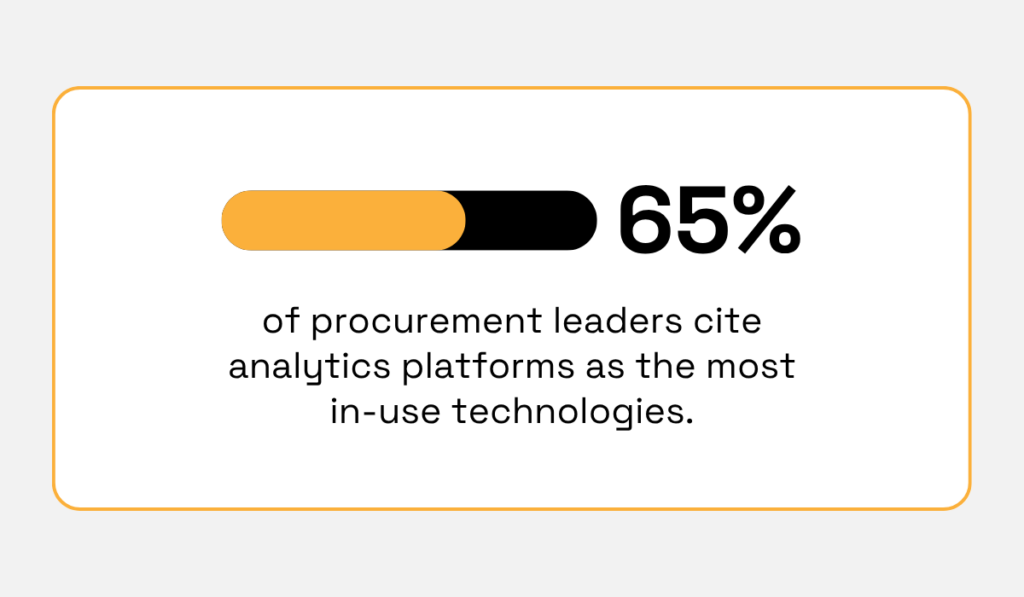
Illustration: Veridion / Data: Amazon Business
With such a strong digital foundation, it’s easy to see MDM as just another system integration or a technical fix to connect data pipelines and feed dashboards.
But that’s a dangerous oversimplification.
Master data management is about surfacing the right data and linking it to critical business decisions. It involves rethinking how information flows through your organization.
It’s far more than just plugging in new software, but many enterprises still view MDM initiatives as tech-first.
McKinsey confirms this.
It found that IT/tech is the most common source of funding for MDM initiatives, while only 16% of organizations view MDM as a company-wide strategic initiative.
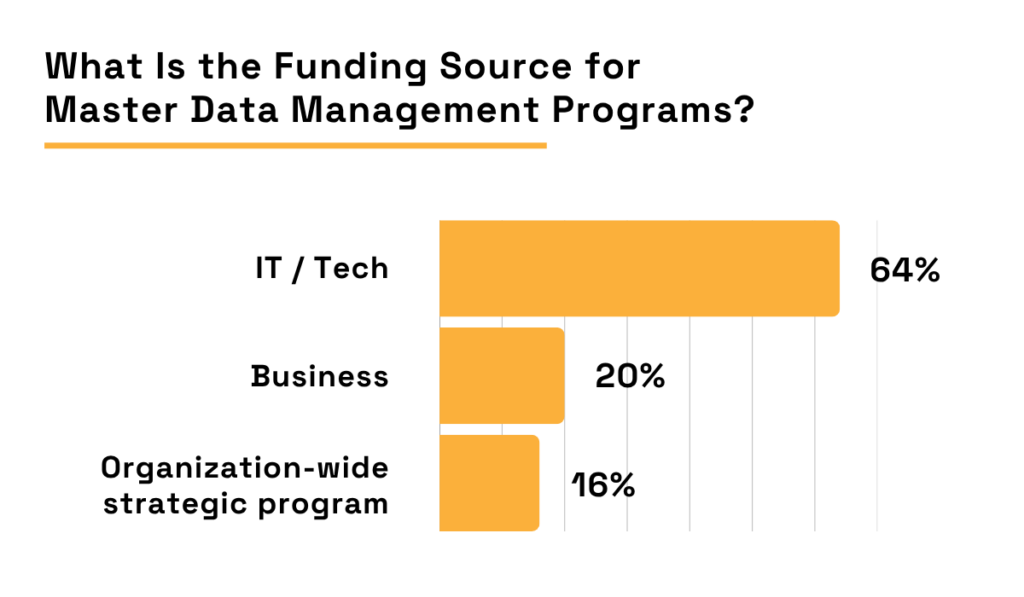
Illustration: Veridion / Data: McKinsey
That disconnect leads to poor adoption, siloed fixes, and limited long-term value.
It’s a kind of mistake that creates shaky foundations, leaving room for inconsistencies and duplication right from the start.
For example, when teams frame MDM as a tech-first project, they’re more likely to overlook critical elements and struggle to make the data usable.
As Data Quality and Data Governance Lead, José Almeida, puts it:
“MDM is not a tech project. It’s a business initiative that happens to have a data problem. Until we treat it that way, we’ll keep spending money on golden records that nobody trusts and building “360-degree views” that never get used.”
There are a couple of things to do to break that cycle, and it starts by setting basic data standards and embedding accountability.
A Fujitsu case study on introducing a data management program outlines what that looks like in practice, from establishing governance and aligning roles to introducing metrics that preserve long-term consistency.

Source: Fujitsu
That’s a lot of steps, but they’re the backbone of data-driven decision-making.
A robust data management framework across your entire organization is the only way to ensure consistency, avoid duplication, and empower employees to keep data accurate.
Remember:
Until MDM is treated as a strategic enabler, and not a one-off tool, procurement teams will keep missing the value their data was supposed to unlock.
When organizations overlook data governance, MDM efforts stall or even fail completely.
In practice, this means skipping the effort to define ownership, stewardship, and enable cross-functional collaboration.
Sam Copeland, Former VP of Merchandising Operations for Office Depot, highlights that implementing new technology is less about the tool and more about redesigning workflows and organizational structure.

Illustration: Veridion / Quote: Dataversity
If that data governance piece is underfunded or deprioritized, the initiative is undermined before it even begins.
So what does meaningful, future-proof MDM redesign look like in practice?
It starts with clearly identifying data owners and appointing data stewards.
These roles are essential for assigning accountability across systems and departments, ensuring consistent formats, preventing duplication, and empowering teams to take responsibility for data quality.
And this kind of structure is no longer optional.
A 2024 Precisely report shows that 71% of organizations now have a data governance program, up from 60% the year before.
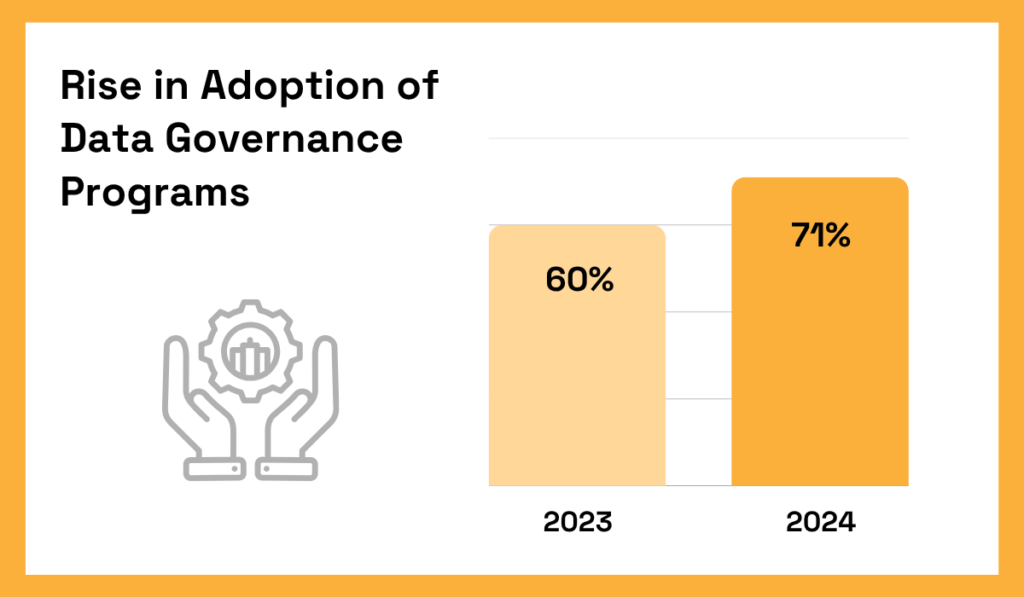
Illustration: Veridion / Data: Precisely
Most importantly, the payoff is evident in:
But collaboration only happens when governance is designed to include the right business functions.
Procurement data is collected and used by finance, supply chain, compliance, IT, and legal.
Even minor misalignments, like different rules for vendor naming or duplicate checks, can create widespread inconsistencies.
Cross-functional coordination must be deliberate, and that’s where role-structuring tools like RACI (Responsible, Accountable, Consulted, Informed) or DARE (Decision-maker, Approver, Recommender, Executor) frameworks come in.
They help clarify responsibilities and prevent confusion across departments.
Luca de Ioanna, Data Governance Architect at CEVA Logistics, emphasizes the significance of the data steward role, a single point of contact who helps teams resolve issues quickly and maintain shared accountability.
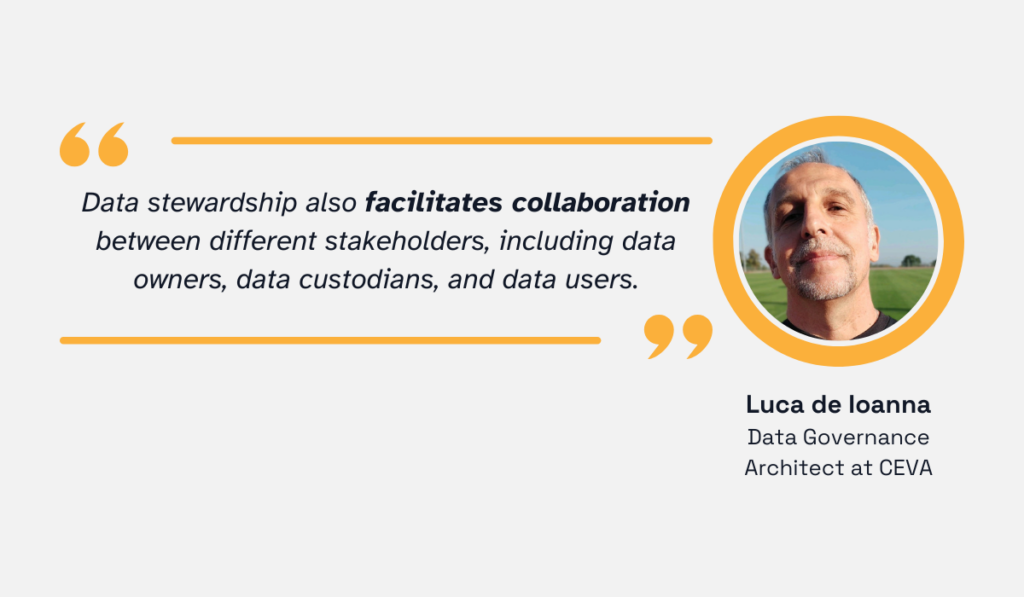
Illustration: Veridion / Quote: LinkedIn
MDM is not just about deploying tools, but about embedding structured processes, defined roles, and data accountability.
Take HICX’s supplier data governance model, for example.
It maps out how organizations can gain the freshest, most relevant insights into their suppliers by switching between multiple views.

Source: HICX
Whether using family-tree hierarchies or flat ERP record structures, choosing the right view depends on operational needs.
Introducing a governance framework takes time, but it’s the foundation that makes long-term progress possible.
Data itself is never the end goal, which is why it’s only valuable when it directly supports strategic outcomes.
For procurement and supply chain teams, these outcomes typically include faster supplier onboarding, improved sourcing decisions, or reduced compliance risks.
But too often, organizations rush to implement a tool or platform because “better data means better business.”
However, that enthusiasm alone won’t drive impact.
In one of its reports, Gartner claimed that 75% of MDM programs will fail to meet business objectives by 2025.

Illustration: Veridion / Data: Gartner
One of the main reasons?
Failure to link MDM with real, measurable outcomes.
This disconnect creates problems on two separate fronts:
Stephen Willis, Principal Research Director at Info-Tech Research Group, explains that this is what happens when initiatives are undertaken in the name of data governance, but without a clear link to real business value.
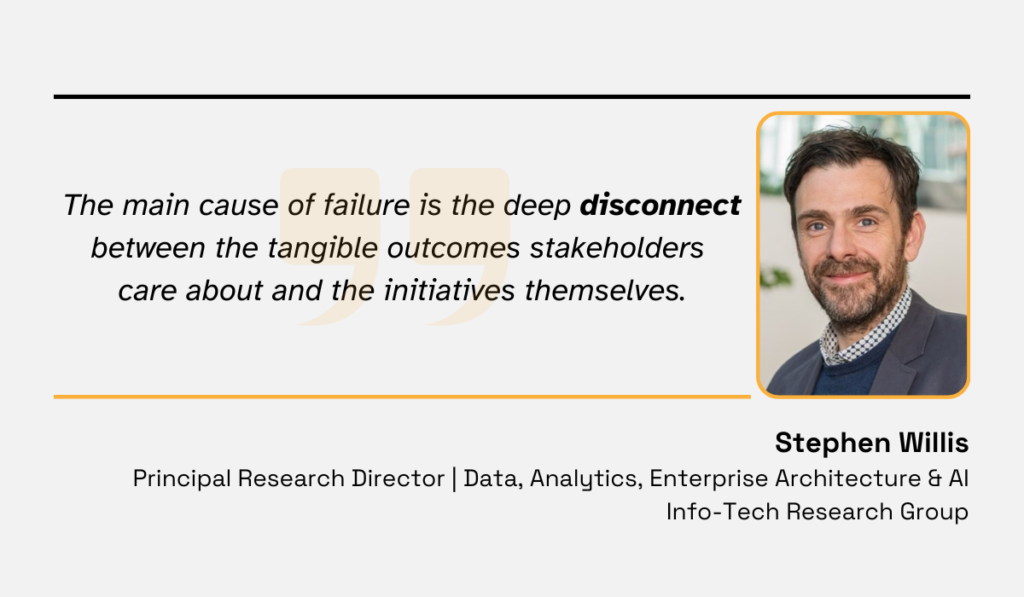
Illustration: Veridion / Quote: Information Week
For starters, even when teams try to build a business case, it’s hard to secure investment in capabilities with indirect or delayed returns.
Improved decision-making, reduced data errors, and operational efficiency are all valuable.
But they’re hard to quantify, and therefore easier to deprioritize compared to projects with faster ROI.
That’s why MDM planning must be steered by business-critical decisions from the very start.
Enhancing the way you manage master data begins by asking the following:
Willis further elaborates that it’s up to your team to forge this connection in a way that makes sense to the business:
“As a data governance team, you need to contextualize data management activities into the language the business understands and make it a part of what they do.”
In other words, you must frame the answers to the above questions in terms like budget, risk, and efficiency, and then map them to both technology and roles.
The framework below illustrates how this connection works: executives define outcomes, middle managers map strategies, and process owners implement them alongside stewards.
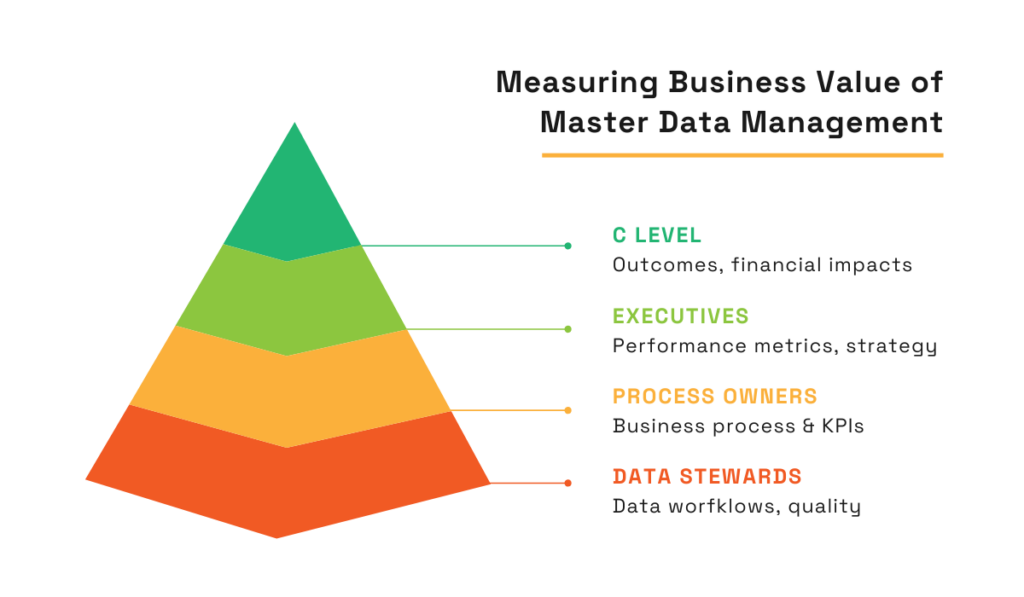
Source: Veridion
To succeed, establish a multi-year roadmap that ties MDM to specific business goals, define the decision points it will support, and make governance part of daily operations.
Ultimately, without alignment, even technically sound data structures struggle to gain traction across departments.
Avoiding this mistake puts your MDM program on the path to real success.
All the benefits of MDM programs are quickly eroded by inaccurate data.
Procurement processes need to be backed by clean, fresh data.
After all, a report that’s six weeks old is practically useless in the context of fast-moving global supply chains.
The biggest culprits are outdated, legacy systems that deliver stale insights.
Charlie Farah, Chief Technology Officer for Analytics and AI at Qlik, recalls how the company’s reporting practices and processes were using data that was a month old or even older.
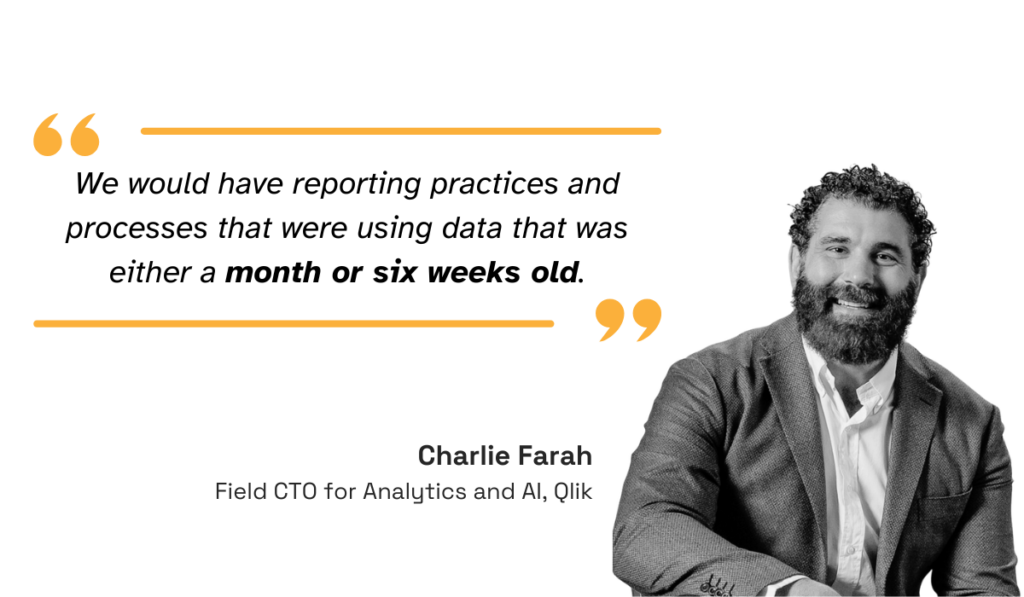
Illustration: Veridion / Quote: CDO Trends
This lag doesn’t just create inefficiencies. It opens the door to ongoing risk.
According to Farah, around 80% of organizational data is unstructured and viewed in isolation, making it harder to spot red flags or piece together the full context of a transaction.
And when that context is missing, you’re leaving yourself vulnerable to fraud.
A 2022 report on anti-fraud technology shows that data analytics are most commonly used to monitor:
The focus on these risk areas is no surprise.
Inaccurate or unchecked data can mean skipped bank verification, unvalidated tax IDs, and duplicate vendor profiles, all of which lead to payment errors, regulatory breaches, or outright manipulation.
Just take the recent case of Intel Israel.
The company uncovered that a former employee had been successfully submitting fraudulent invoices for over a year by exploiting a weakness in critical verification steps.

Source: CTech
Since service payments didn’t require signed delivery notes or cross-departmental confirmation, the employee could change transaction classifications post-approval and carry out the fraud in collusion with a supplier.
These cases often stem from gaps in data validation practices.
According to Trustpair, 74% of companies perform account checks only once, during the initial supplier onboarding.
Meanwhile, just 20% do it in real-time and for every transaction.
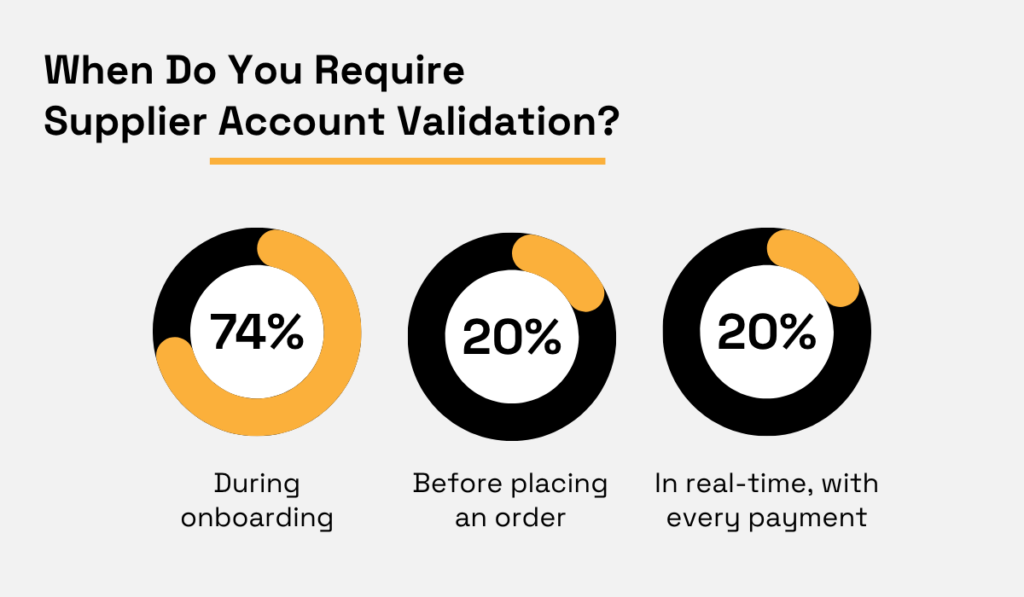
Illustration: Veridion / Data: Trustpair
Real-time data management helps eliminate the risks while guiding ongoing business success.
That’s where solutions like Veridion come in.
Veridion delivers real-time, third-party vendor data, enabling procurement teams to enrich and validate their vendor master without the manual overhead.
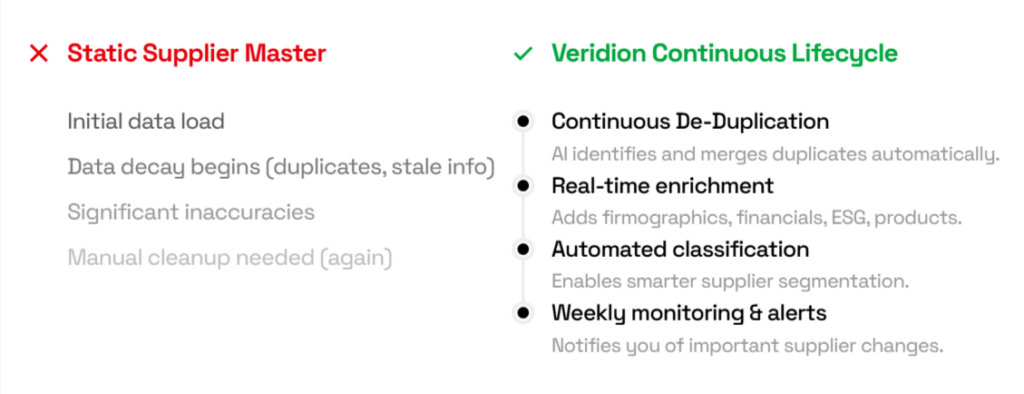
Source: Veridion
From automatic duplicate detection to verification of legal entities, tax IDs, and bank information, it ensures your vendor data is both up to date and fraud-resistant.
Veridion’s global, expansive base of 134+ million suppliers also offers unmatched depth.
With over 220 supplier attributes, you gain access to firmographic data, corporate hierarchies, product and service portfolios, and even ESG insights, making it easier to build reliable, long-term supplier relationships.

Source: Veridion
Thanks to real-time enrichment, you’re working only with verified data that supports every sourcing, compliance, or payment decision.
In an environment where risk hides in the details, that assurance makes all the difference.
When the pressure is high, it’s tempting to chase quick wins.
But overextending your procurement data efforts can backfire, especially when it comes to master data management.
Procurement leaders are often under pressure to prove their value—fast.
In fact, 41% of teams surveyed by Amazon Business highlight the lack of data demonstrating procurement’s impact as one of their key obstacles.
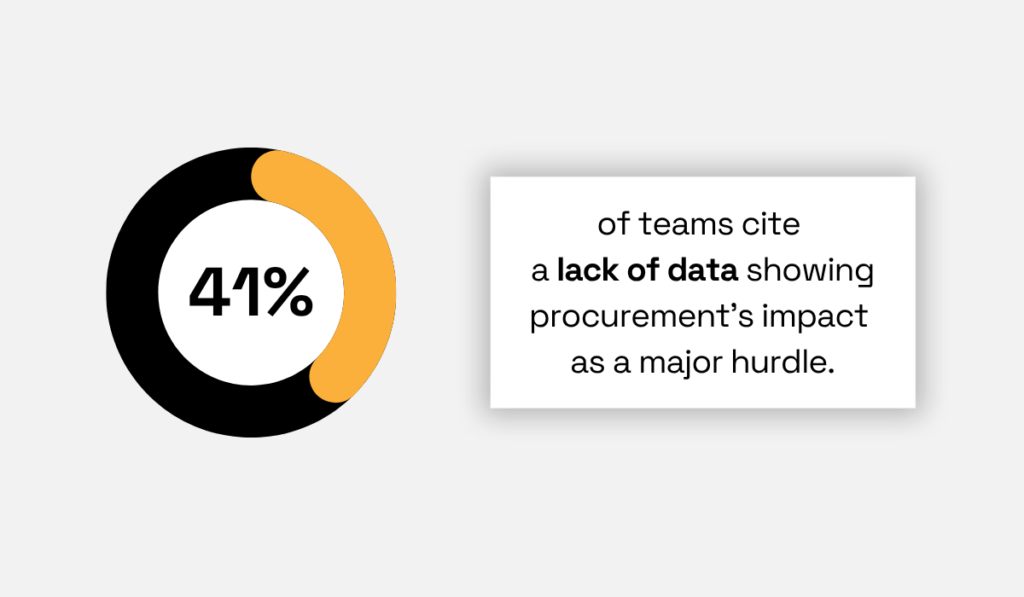
Illustration: Veridion / Data: Amazon Business
At the same time, nearly three-quarters of senior executives surveyed by Amazon Business say better insights are a top priority.
The awareness of the importance of ensuring access to quality, connected data is fueling the urgency to centralize supplier data across all systems, categories, and regions at once.
But this instinct to move fast often leads to stalled projects.
Large-scale MDM efforts can overwhelm teams, scatter focus, and ultimately produce delayed or failed outcomes.
Gartner’s Senior Director Analyst, Sally Parker, notes that making the most of MDM requires significant effort, which is why companies need to be careful not to bite off more than they can chew.
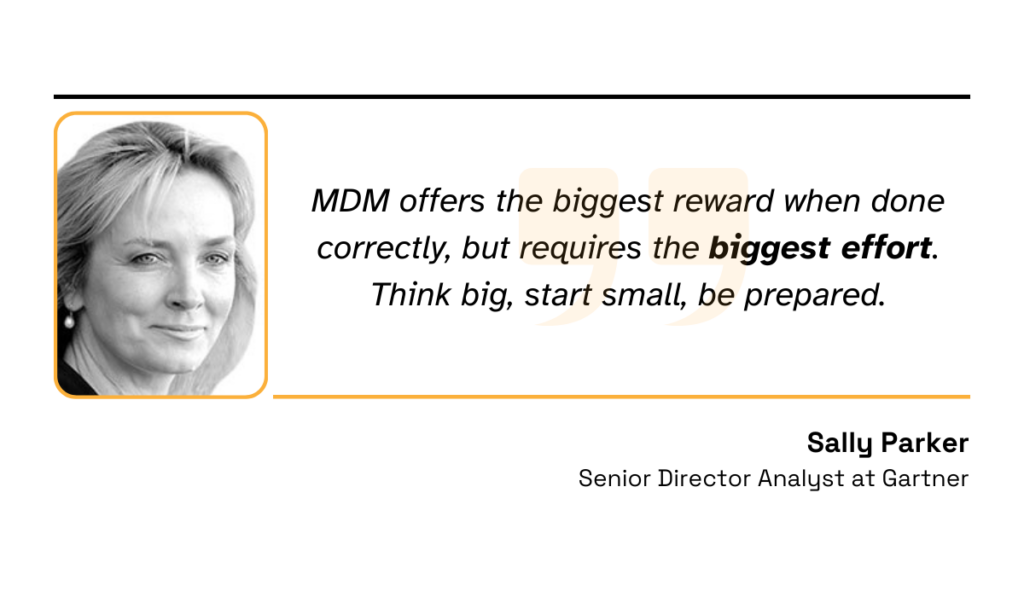
Illustration: Veridion / Quote: Gartner
Instead of attempting an all-at-once transformation, it’s essential to start small and take time with fundamentals, such as choosing the right MDM model.
As explained by McKinsey, the four common approaches to master data management differ in complexity.
| Registry MDM | Aggregates data from multiple sources to identify duplicates. Simple and low-cost. |
| Consolidation MDM | Periodically matches and cleans data. Suitable for high-volume environments. |
| Centralized | Maintains a single master record and syncs with source systems. |
| Coexistence | Allows business units to manage data locally while sharing core records. Especially beneficial for large, complex enterprises. |
Organizations typically begin with registry or consolidation and progress to centralized or coexistence as their data management capabilities mature over time.
The advanced models offer more flexibility but also demand more resources and planning.
To choose the right model and scope, teams should ask:
Starting with focused, high-impact areas can unlock value early on without overloading your team or systems.
In the end, it doesn’t mean doing less, but simply doing what matters first to ensure resilience and long-term gains.
Master data management shouldn’t be a rigid system forced into place, especially when procurement data covers so many formats, owners, and use cases.
That’s why it’s essential to recognize where your current approach causes friction and tackle one issue at a time.
Focus on clarity, collaboration, and strong governance before moving on to the structure, scope, and technology that will truly support your business—not just today, but as it evolves.
In the end, the right MDM program is built, not bought.
While this takes time, the long-term gains are far more valuable.